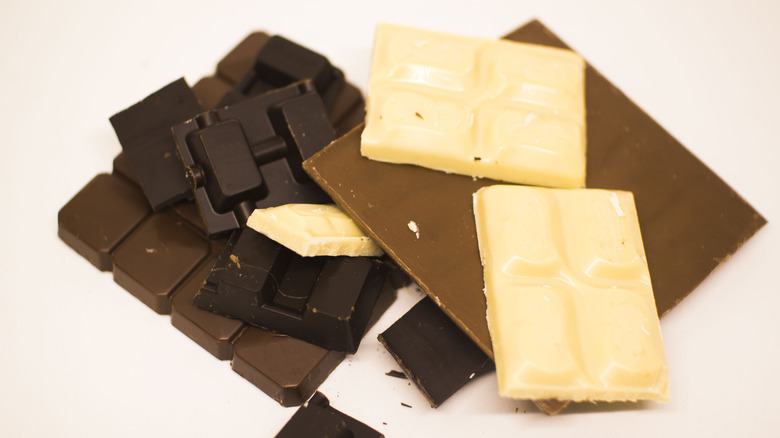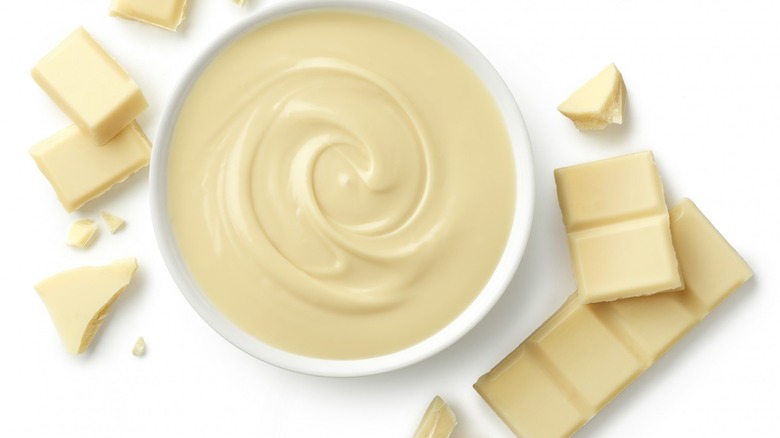The Medicinal Origins Of White Chocolate
It may be a close relative of one of the world's most popular confections, but that hasn't kept white chocolate from being a "love-it-or-hate-it" kind of sweet. Made with cocoa butter — or cacao butter, per Read Cacao, as well as sugar and milk, The Takeout admits white chocolate isn't to everyone's liking.
The product's reputation as an inferior product unworthy of the name "chocolate" could come down to how the cacao butter in a particular kind of white chocolate is treated. Per Read Cacao, there are currently two kinds of cacao butter on the market, deodorized and non-deodorized. The former is cacao butter which is treated to remove the scent of the cacao bean, leaving a product that has no flavor and a lighter color. In contrast, non-deodorized cacao butter has a pale-yellow tint and carries the scent and flavor that makes cocoa butter a highly desirable ingredient.
While both can be used to make edible white chocolate, the former needs the addition of vanilla and copious amounts of sugar to make the treat palatable — which Read Cocoa says could explain white chocolate's reputation as a cloying treat. It is non-deodorized cocoa butter that makes it possible to produce quality white chocolate to the minimum standard set by the Food and Drug Administration for white chocolate: 20% cacao butter, 15% milk powder, and no more than 55% of a sweetener which includes sugar and maltitol, per The Nibble; the European Union also set a similar standard.
White chocolate was first created as a medicine
None of this was a consideration when a Swiss chemist named Henri Nestlé decided to work with his neighbor, businessman Daniel Peter to create milk chocolate in 1875 and then use that knowledge to produce the world's first incarnation of white chocolate (per Milkybar).
At the time, Nestlé was considered an expert on milk because he and his firm had created condensed milk, as well as "farine lactée" or "flour with milk," which was used as infant formula, per Nestlé. Those innovations brought Nestlé and medical company Roche together to create a vitamin-charged condensed milk that could be given to children as a nutritional supplement, known as Nestrovit, per South China Morning Post (SCMP).
To make Nestrovit palatable to its target market, Read Cacao says Nestlé decided to turn its nutrition-charged milk product into a candy bar. From there, it didn't take long for Nestlé to work out that they could actually turn Nestrovit into a non-medical treat, paving the way for the first white chocolate bar, Milkybar, or Galak — as it is known in some markets — to be manufactured, per Milkybar.

